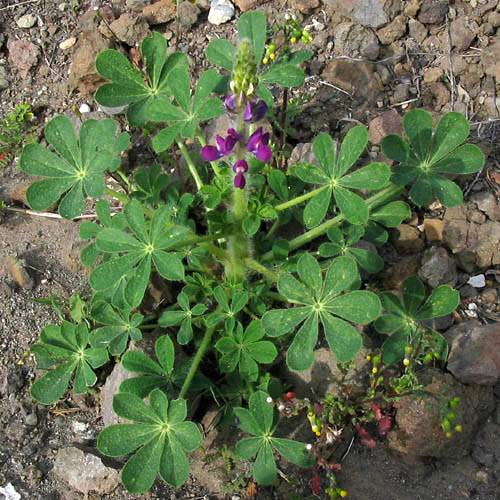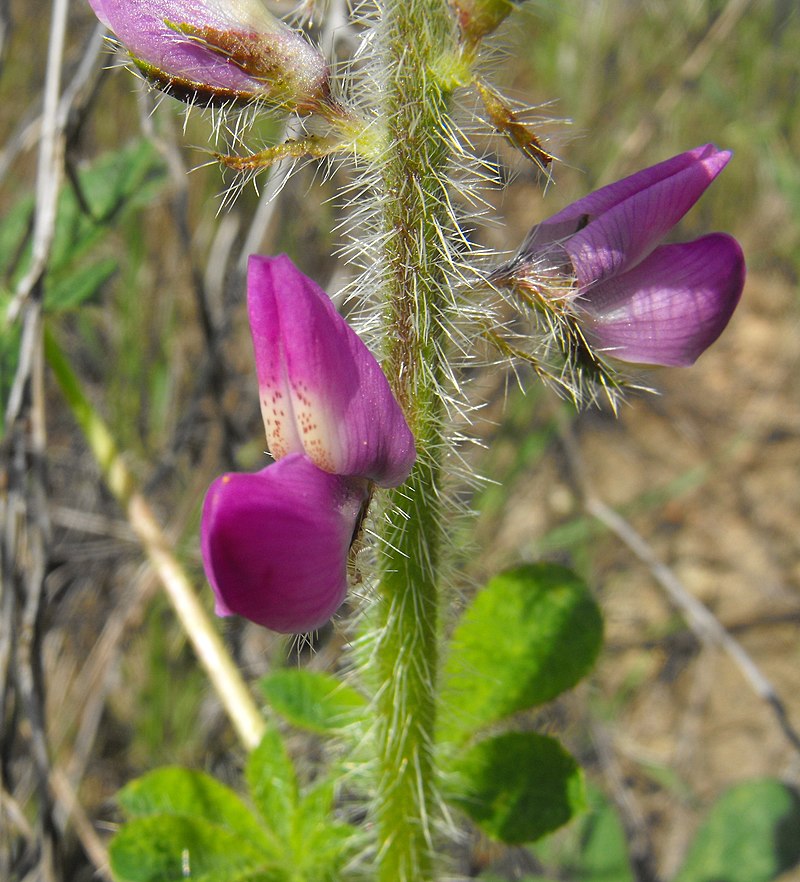
Native to dry rocky slopes of the coastal mountains of California and Baja California, this herbaceous annual is a member of the legume family, Fabaceae, that also includes beans, mimosa, and black locust. it grows 1-3′ tall, occasionally taller, and has long stiff hairs on the stems and leaves that sting like nettles when touched. The palmate leaves are made up of 5-8 leaflets that are up to 5″ long. In spring 4-12″ long racemes bear flowers attractive to butterflies and bees, including bumble bees. The pea-like flowers are 1/4-1″ long and are purple to dark pink with a yellowish to pinkish spot on the banner. The fruit is a hairy pod, .8-1.6″ long, contains 3-6 seeds, and provides food for birds. The genus name, Lupinus, is derived from the Latin word lupus meaning wolf, and refers to the false belief the plants destroyed the soil. The specific epithet, hirsutissimus, is the Latin word meaning very bristly or prickly, and refers to the stinging hairs on the plant. Photo Credit NPS Wikimedia Commons

Type: Herbaceous annual
Bloom: Clusters of pink to purplish, pea-like flowers in spring
Size: 1-3′ H x 2′ W
Light: Full sun
Soil: Sandy, dry to medium moist, well-drained
Hardiness: NA
Care: Low maintenance; avoid touching
Pests and Diseases: Generally healthy but susceptible to damage by aphids, anthracnose, mosaic virus.
Propagation: Seed (soak stored seed in hot water for best germination)
Companion Plants: : California poppy, California goldfields, mariposa lily
Outstanding Selections: None
Photo Credit: Stickpen Wikimedia Commons